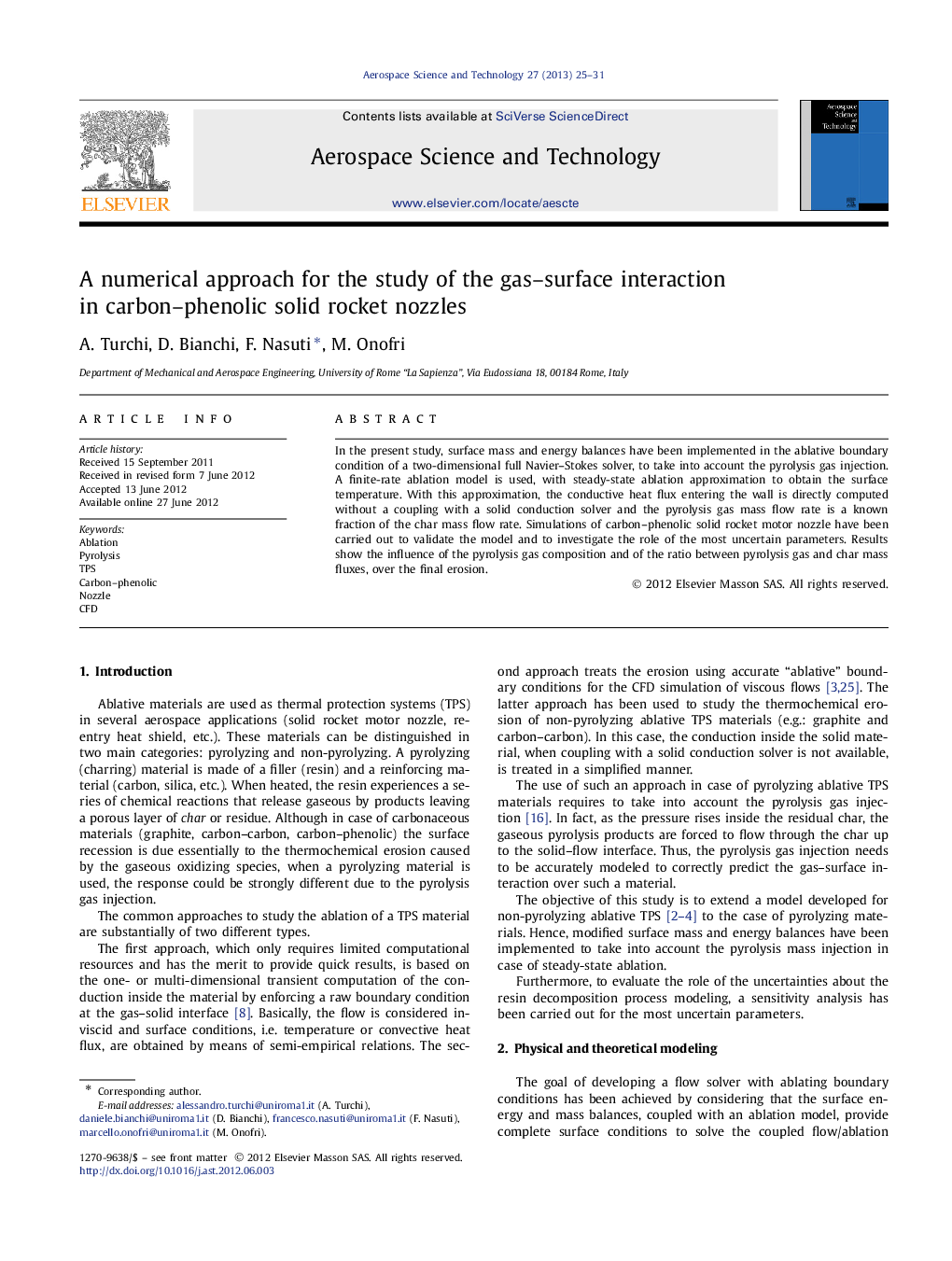| Article ID | Journal | Published Year | Pages | File Type |
|---|---|---|---|---|
| 1718198 | Aerospace Science and Technology | 2013 | 7 Pages |
In the present study, surface mass and energy balances have been implemented in the ablative boundary condition of a two-dimensional full Navier–Stokes solver, to take into account the pyrolysis gas injection. A finite-rate ablation model is used, with steady-state ablation approximation to obtain the surface temperature. With this approximation, the conductive heat flux entering the wall is directly computed without a coupling with a solid conduction solver and the pyrolysis gas mass flow rate is a known fraction of the char mass flow rate. Simulations of carbon–phenolic solid rocket motor nozzle have been carried out to validate the model and to investigate the role of the most uncertain parameters. Results show the influence of the pyrolysis gas composition and of the ratio between pyrolysis gas and char mass fluxes, over the final erosion.
